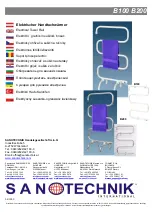
14
operation
Operation
KEROSENE (1-K)
For optimal performance of this heater, it is strongly suggested that #1-K
kerosene be used. #1-K kerosene has been refined to virtually eliminate
contaminants, such as sulfur, which can cause a rotten egg odor during
the operation of the heater. However, #1, #2 (fuel oil), JP-8 or Jet A fuel
oil may also be used if #1-K kerosene is not available. Be advised that
these fuels do not burn as clean as #1-K kerosene, and care should be
taken to provide more fresh air ventilation to accommodate any added
contaminants that may be added to the heated space.
NOTICE
Kerosene should only be stored in a blue container that is clearly
marked “kerosene”. Never store kerosene in a red container. Red is
associated with gasoline.
• NEVER store kerosene in the living space. Kerosene should be stored
in a well ventilated area outside the living area.
• NEVER use fuel such as gasoline, benzene, alcohol, white gas,
camp stove fuel, paint thinners, or other oil compounds in this heater
(THESE ARE VOLATILE FUELS THAT CAN CAUSE A FIRE OR
EXPLOSION).
• NEVER store kerosene in direct sunlight or near a source of heat.
• NEVER use kerosene that has been stored from one season to the
next. Kerosene deteriorates over time. OLD KEROSENE WILL NOT
BURN PROPERLY IN THIS HEATER.
• Use 1-K kerosene in this heater. #1 fuel is a suitable substitute.
THEORy OF OPERATION
Fuel System:
This heater is equipped with an electric magnet pump that
forces fuel through the fuel line connected to the fuel intake, and then
through a nozzle in the burner head. This fuel is then sprayed into the
combustion chamber in a fine mist.
“Sure Fire Ignition”:
The electronic ignitor sends voltage to a specially
designed spark plug. The spark plug ignites the fuel and air mixture
The Air System:
The heavy duty motor turns a fan that forces air into and
around the combustion chamber. Here, the air is heated and then forced
out the front of the heater.












































